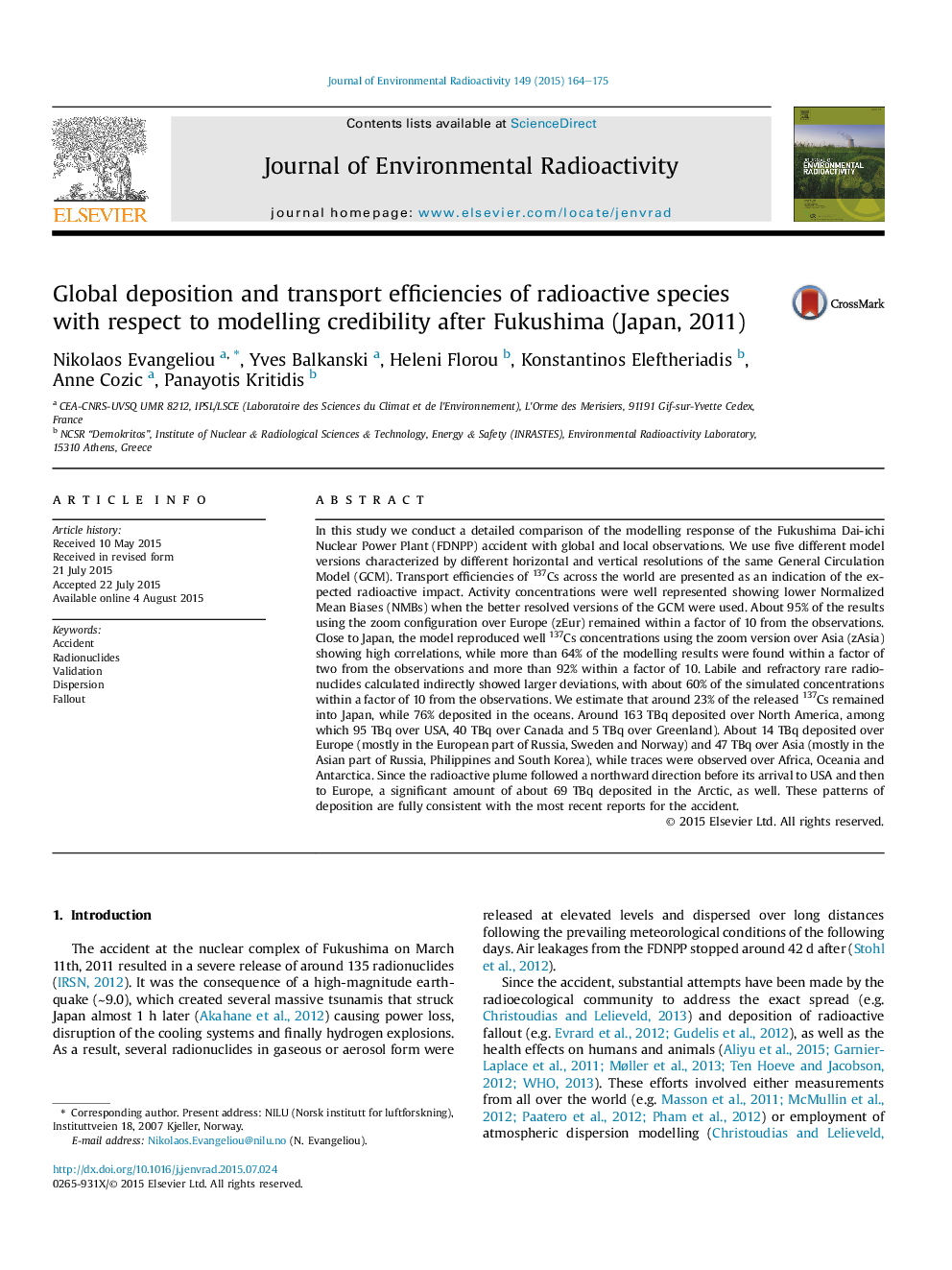| کد مقاله | کد نشریه | سال انتشار | مقاله انگلیسی | نسخه تمام متن |
|---|---|---|---|---|
| 1737837 | 1521584 | 2015 | 12 صفحه PDF | دانلود رایگان |
• 5 versions of an Eulerian model were used to simulate the Fukushima accident.
• 23% of the released 137Cs deposited over Japan and 76% over the oceans.
• 163 TBq of 137Cs deposited in North America, mostly in USA (95 TBq) and Canada (40 TBq).
• 14 TBq of 137Cs deposited over Europe, 47 TBq over Asia, traces in Africa, Oceania and Antarctica.
• The global mean lifetime of 137Cs was 13 days and the effective half-life 11 days.
In this study we conduct a detailed comparison of the modelling response of the Fukushima Dai-ichi Nuclear Power Plant (FDNPP) accident with global and local observations. We use five different model versions characterized by different horizontal and vertical resolutions of the same General Circulation Model (GCM). Transport efficiencies of 137Cs across the world are presented as an indication of the expected radioactive impact. Activity concentrations were well represented showing lower Normalized Mean Biases (NMBs) when the better resolved versions of the GCM were used. About 95% of the results using the zoom configuration over Europe (zEur) remained within a factor of 10 from the observations. Close to Japan, the model reproduced well 137Cs concentrations using the zoom version over Asia (zAsia) showing high correlations, while more than 64% of the modelling results were found within a factor of two from the observations and more than 92% within a factor of 10. Labile and refractory rare radionuclides calculated indirectly showed larger deviations, with about 60% of the simulated concentrations within a factor of 10 from the observations. We estimate that around 23% of the released 137Cs remained into Japan, while 76% deposited in the oceans. Around 163 TBq deposited over North America, among which 95 TBq over USA, 40 TBq over Canada and 5 TBq over Greenland). About 14 TBq deposited over Europe (mostly in the European part of Russia, Sweden and Norway) and 47 TBq over Asia (mostly in the Asian part of Russia, Philippines and South Korea), while traces were observed over Africa, Oceania and Antarctica. Since the radioactive plume followed a northward direction before its arrival to USA and then to Europe, a significant amount of about 69 TBq deposited in the Arctic, as well. These patterns of deposition are fully consistent with the most recent reports for the accident.
Figure optionsDownload as PowerPoint slide
Journal: Journal of Environmental Radioactivity - Volume 149, November 2015, Pages 164–175
